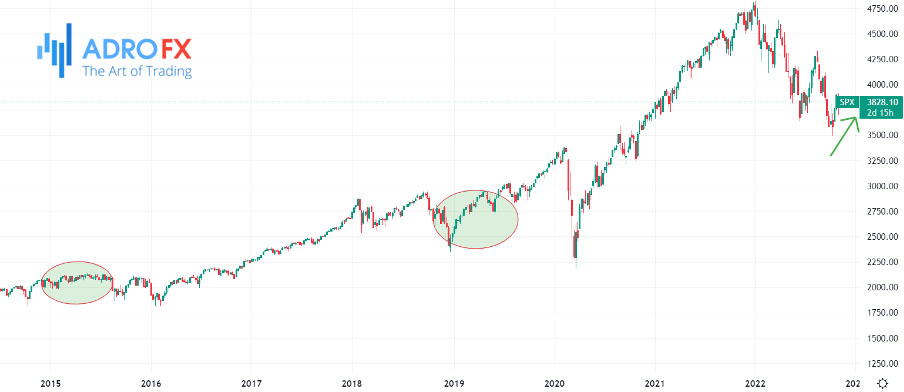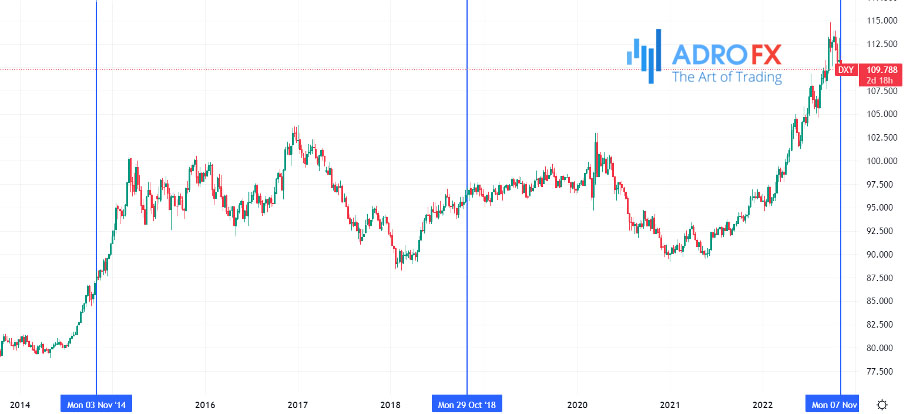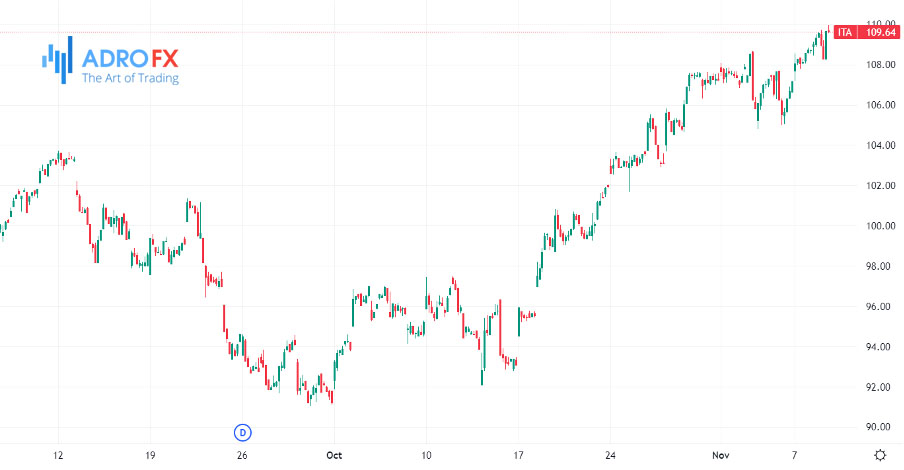What the Elections Hold for Markets | Daily Market Analysis

Key events:
USA – Crude Oil Inventories
One can`t but be concerned about the midterm elections, right? Worrying about what the makeup of the U.S. Congress will be after the election is always present. Curiously, the stock market usually drops during the period until the first Tuesday after November 1 in election years, but then rises sharply until the second quarter of the following year.
That's not always the case, though if you go back to 1928, the six-month period from May through October during midterm election years, the S&P 500 has a rare negative return for an index. As soon as mid-October passes, the stock market begins to pick up. According to Bank of America Global Research, the best six-month period for stocks, on average, is from November through April, inclusive, from the midterm election year through the year before the presidential election.

Moreover, the election outcome this time around could be a divided government, and in the past, such an outcome has played into the hands of stocks.
Republicans are likely to win a majority in at least one house of Congress, and the White House will naturally remain with President Joseph Biden, who represents the Democrats. According to data compiled by The Wall Street Journal, it is best for the S&P 500 if the president is a Democrat and Congress is controlled by the Republican Party, or if control of the House and Senate is split between the two parties.
Looking at expert opinions, the Democrats have very little chance of winning a majority in Congress in January 2023. Thus, there is only an 8% chance that the Democrats will retain a majority in the House and Senate. The probability of a "red wave" that would put Republicans ahead is estimated at 7 to 10. For equity markets, this outcome could be very favorable.

Let's focus on that in detail. Which sectors and industries can make money with a divided government?
First, it should be assumed that bill debates in Washington will always be stalled. It will be very difficult for lawmakers to get major spending and tax changes through Congress. It would actually mean more clarity for the markets, although you have to be prepared for the debates on issues like the debt ceiling to come up again.
With a Republican majority in Congress, we can expect an increase in defense spending. This, however, could be supported by both parties as the geopolitical risks from China and Russia remain a serious concern for both Wall Street and Washington. The defense sector can be invested in through the iShares U.S. Aerospace & Defense ETF (NYSE: ITA) exchange-traded fund.

Another clear risk relates to cybersecurity, and that risk now appears to be increasing.
You can even turn to individual companies that should benefit from this trend. These could be American-oriented companies like Rockwell Automation (NYSE: ROK) or companies with operations in Mexico, Canada, or Japan, for example. Given its energy dependence on Russia, Europe is perhaps too risky an option for governments and large corporations, despite the region's friendly relations with the United States.
The stock market is usually down before an election, but as certainty sets in, a rally begins. As for 2022 and beyond, several important investment themes should emerge in the market if Republicans, as expected, win a majority in at least one chamber of Congress.









